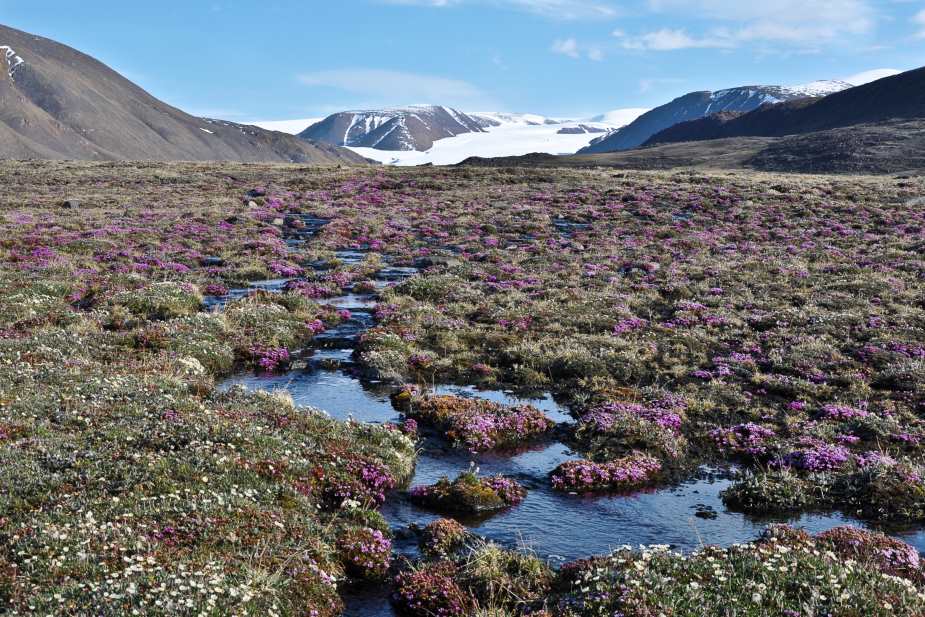Summary:
In a massive, four-decade study spanning more than 2,000 Arctic plant communities, scientists have found that climate change is reshaping the tundra, but not in predictable ways.
The research, published in Nature, analyzed 42,234 records from 2,174 plots across 45 Arctic sites, covering 490 vascular plant species. While warmer conditions generally supported greater species richness, particularly in southern and lower-latitude areas, overall trends in biodiversity showed no consistent direction. Instead, widespread species turnover emerged as the defining feature: 59% of sites gained or lost species, with changes most pronounced in areas experiencing the strongest warming.
Rather than converging into more uniform ecosystems, Arctic plant communities remained ecologically distinct, defying expectations of biotic homogenization. Shrub expansion, especially of taller varieties, was frequently linked to declines in plant diversity, likely by outcompeting smaller species. “Warmer temperatures are bringing in more species, but not everywhere,” said lead author Dr. Mariana García Criado of the University of Edinburgh. “There are no clear winners or losers.”
The international study, part of the International Tundra Experiment (ITEX), involved 54 researchers from 50 institutions. Scientists say tracking Arctic plant shifts is essential to understanding broader ecological impacts — from wildlife habitat changes to disruptions in Indigenous livelihoods and the global carbon cycle.

Arctic plants react to climate change in unexpected ways
In the tundra, there’s no clear winner
Scientists studying plants in one of the most extreme environments on Earth say the Arctic is indeed changing under the impact of global warming — but not in a uniform way.
Researchers tracked more than 2,000 plant communities over four decades, and found that some species thrived while others declined. Many locations saw new species flourish, while others lost biodiversity.
“Our study sheds light on how climate change is reshaping one of the world’s most fragile ecosystems, which is warming at four times the global average,” said lead author Dr. Mariana García Criado, a postdoctoral researcher in tundra biodiversity at the University of Edinburgh.
“Warmer temperatures are bringing in more species, but not everywhere. Shrubs are reshaping the Arctic ecosystem, but not universally. In other words, while the plant mix is shifting, the overall composition remains in flux. There are no clear winners or losers.”
The research spanned 2,174 plots across 45 sites from the Canadian High Arctic to Alaska and Scandinavia. A team of 54 researchers from 50 institutions collaborated on the project, part of the International Tundra Experiment (ITEX).
UBC geography professor Dr. Greg Henry, who helped establish the study’s data collection system, described the research as involving “thousands of hours of fieldwork in remote locations — enduring extreme weather, clouds of biting insects and even the occasional polar bear encounter.”
But, he added, it’s all worth it. “We need to do long-term research to understand the Arctic, as ecosystem change starts with plants. When they change, everything follows — including Arctic animals, local and Indigenous communities, and the global carbon cycle.”
Why it matters
Dr. Isla Myers-Smith, a professor at UBC’s faculty of forestry and the University of Edinburgh, says the study underscores just how unpredictable Arctic change can be. “We’re seeing biodiversity shift in unexpected ways, with some species thriving while others decline,” she explains. “These shifts are reshaping ecosystems in ways we don’t yet fully understand, making it even more urgent to track what’s happening and prepare for the consequences.”
Global collaborations help us understand what’s happening, but Dr. Myers-Smith says, “This isn’t just about tracking change. It’s about acting fast to confront the climate crisis.”
Journal Reference:
García Criado, M., Myers-Smith, I.H., Bjorkman, A.D. et al., ‘Plant diversity dynamics over space and time in a warming Arctic’, Nature (2025). DOI: 10.1038/s41586-025-08946-8
Article Source:
Press Release/Material by Lou Bosshart | University of British Columbia (UBC)
Featured image: Tundra plants can eek out an existence in the very short summers of the Canadian High Arctic such as here on Ellesmere Island, Nunavut. Credit: Anne Bjorkman




